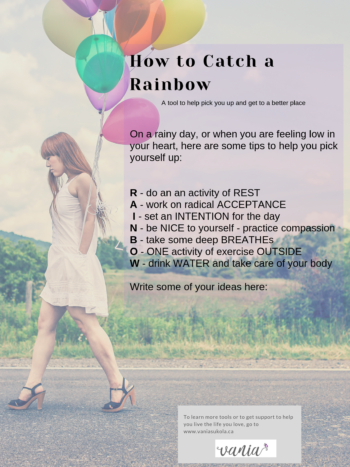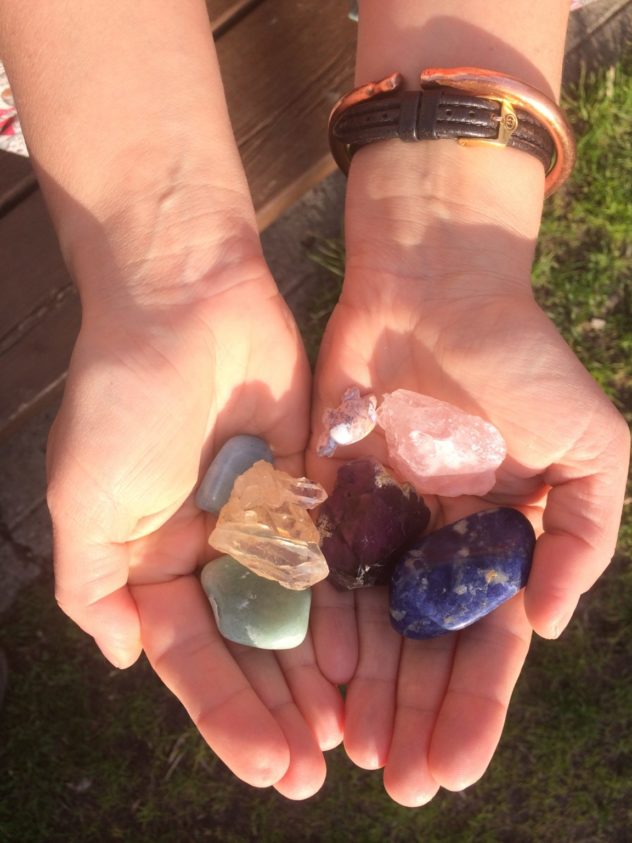I’ve been sitting with my feelings a lot these last few months. It’s been both a helpful exercise to catch me in my feeling as well as practice what i preach as a therapist.
It’s not lost on me that as a therapist, i have a bias and privilege to already know a thing or two about how to care for feelings.
One thing i’ve noticed is that feelings are fleeting, unless we make contact with them. I read somewhere that a feeling only lasts in our consciousness for about 90 seconds unless we make them linger more consciously.
Talk about a fleeting moment.
This is similar to our thoughts where we assume they are fact but most likely are not. We give them power and weight, and by doing so, we start to believe they are 100% true.
If you don’t believe me, don’t take my word for it. There is a large body of work diving into the depths of the brain, so neuroscience tells us so: Neuroplasticity is the ability of the brain to change through growth and change. It can be rewired to function in some way that is different from how it previously functioned.
We give what we think so much time and energy, or at least the hard feelings and negative beliefs. And yet, that doesn’t serve us. Rather, it keeps us stuck in our negativity bias, or an old limiting belief.
Don’t get me wrong, i don’t necessarily want to shift from a negativity bias to toxic positivity, but i do want to find a balance of my emotions. This is what Emotion Regulation is, the ability to handle any feeling no matter how messy or hard they are, and not bypass or run from them.
I have been tracking when a feeling shows up, and what it may need. Sometimes, i am faced with two feelings that feel polarized around a decision to make. If one feeling is afraid of a new outcome and the one is excited, i ask myself what option allows me to savour the feeling i want to linger in. I don’t disregard the fear, but rather let it know its valid and then choose to go with the option that allows the excitement to be more present.
We can feel our feelings without them consuming us or self-sabotaging the pleasure and outcome we are truly wanting. This is a way to let us acknowledge the feeling and let it know it’s noticed without letting it take over. When i spend time with this, i am giving compassion to a feeling or belief that i had in older versions of me, the older parts that are stuck in a time loop that no longer serves. It doesn’t realize i am better than before, and have new resources. This interoception is the work of Parts Work practice.
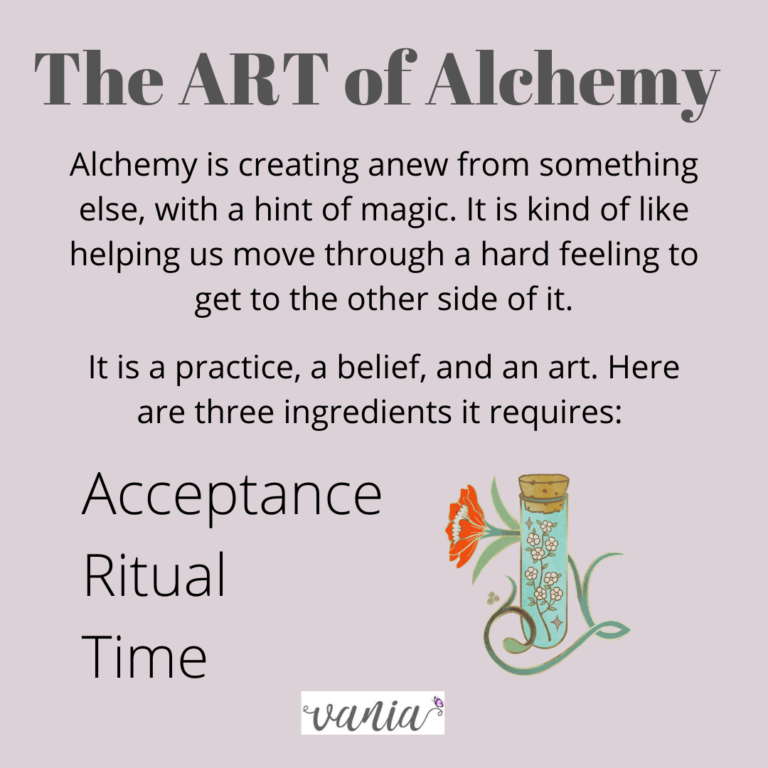
Alchemy is the science experiment of creating anew from something else, with a hint of magic. It is kind of like helping us move through a hard feeling to get to the other side of it. It is a practice, a belief, and an art. Here are three ingredients it requires: Acceptance, Ritual, Time. I like to think of finding a new place with a feeling to be like the steps of creating gold from goo.
If you are stuck on how to do this, here are some simple steps to process challenging emotions instead of bypassing them or numbing out from feeling too much. When we don’t let ourselves feel the big and messy feelings, we also then turn off feeling the big good feelings.
1) Acceptance: Accept the feeling you are having and what it is trying to tell you. Acknowledging it helps it be cared for instead of bypassing it. Ask yourself “What am i feeling right now? Have i felt this way before, what did i do to help me then, how does my body feel now with this feeling…investigate if the feeling is new or has visited you before.
2) Ritual: What are things you can do to care for it – what do you need to Resource yourself? Don’t just do this as a reaction, do it repeatedly and often. What tools helped you before, what might help you right now? Trial and error is a process of alchemy. When we resources ourself in this way we validate the feeling: It’s ok to feel this way right now. Don’t run from it – nourish it.
3) Time: Be patient rather than resilient; don’t bypass the feeling or it will flood you later; take time to heal- slow down and rest; Titration is key just like when making gold in alchemy. We need to have time to shift from it.
I like to think of this process like an emotional vampire who has not been allowed in. Vampires cannot enter a home unless invited in to cross the threshold. So, unless i say, “sure Sadness, come on in,” it may just give me a gentle wave and go on her not-so-merry way.
I appreciate that not all feelings are primary, but rather a reaction to my original emotion. A secondary feeling is how i feel about the primary feeling. For instance, have you ever felt happy after being surprised with a special gift? That feels easy – what about becoming angry that i was scared. It is a judgment about ourselves because of old procedural learnings we have not just about the feeling itself but also what to do for it. If we weren’t held, seen or cared for as children when in this feeling state, it is hard for us to know what to do for them now as adults. So we alchemize that fear response to being angry at ourselves for being scared.
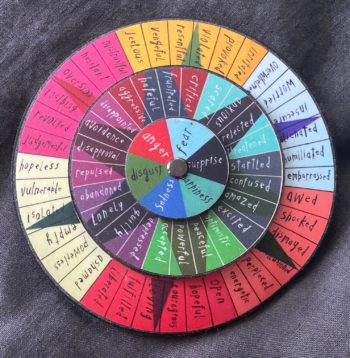
Have you heard of a Feelings Wheel? It’s a gorgeous visual depiction of the multitude of feelings we may have over our lifetime, day, year. I especially love Lindsay Braman’s model. She took it a step further and included somatic sensations that typically go with feelings. A movie that i adore about feelings is the animated story of Inside Out – Joy and Sadness are the stars and their journey to co-exist is a stunning portrayal of mixed feelings and our full range of emotions.
We live in a world that prioritizes how we think over what we feel. Our capitalist masculine-oriented system dictates that we are successful when we think well and feel less. Emotions are a sign of feminine energy and seen as weak. This lack of permission to be okay with any feeling we have (or complain if we are not happy) is also seen as insubordinate or negative. So, most messy feelings get put in the individual and collective shadow, only to be seen in extreme volcanic eruptions. We internalize that we are ‘too much’ for other people because we have feelings: For the record, we are NOT TOO MUCH. Rather, this is a reflection of our people’s lack of capacity to handle more feelings. We are walking feeling wheels, all of us. A good way to reclaim this is to honour the feminine AND masculine in all of us.
Not only are we able to get a better handle of our emotions, we are also able to heal old experiences of our feelings with new positive corrective ones. Remember how i mentioned neuroplasticity and how our brain can learn new tricks? As our living happens in real time, in the here and now, we are given lots of do-over opportunity to correct old negative experiences that have been stuck in us. One way i have been able to do that is to reclaim my right to anger or sadness. Of course i’m sad – my mom died and i was not able to heal our relationships. My sadness is proportional to the experience. My partner and own therapist reflect that my feeling is not only valid but also understood. That has been a reckoning: I was told my sadness was too much as a child, and that my anger had no place at the table.
Dosing the field with safety is when we intentionally connect with things that help our nervous system feel safe. It comes from the beautiful work of Polyvagal Theory to help us just boost just enough so we have a bit more capacity in our bodies. Think of intentional glimmer moments from Deb Dana. (I think I heard of this term specifically by Carmen Spagnola.) So, make sure you stock up on things like: Chocolate (the good stuff), tea, hot shower, candles, fresh flowers, good music. Make a point to get outside, talk to a friend, or recall a favourite memory. It doesn’t have to be sensory-based resources like this but just enough to dose yourself with safety.
When we resource ourselves in this way, it reminds our body that we do have some capacity. Even if it remembers other similar hard experiences like this, this present moment opportunity is a corrective experience that helps us stay in the here and now.This article is a great resource to learn just how this works.
There will be days like this: hard ones that feel full of sadness and disappointment, heartbreak even. Marianne Williamson reminds us that sadness is not a mental health issue. It’s okay to be sad and not have only happy days. This is living the full human experience.
The French philosopher Blaise Pascal taught that every problem comes from a person not being able to sit alone in a room with themselves (and their emotions). This may feel challenging because it is a forced pause to stay with our feelings. We typically want to run away from them and adrenaline is an addictive hormone that gets us moving away from reflecting on how we are feeling. Remember, feelings are fleeting so if we learn how to tend to ourselves for the 90 seconds they are visiting us, they will move through us faster.
Remember, it really is up to us to stay with a feeling or to disregard it. Further, we can have agency then to learn through feeling joy or pain. We don’t necessarily want to be void from feeling but rather have some psychological immunity so we don’t stay stuck in the suffering of it.


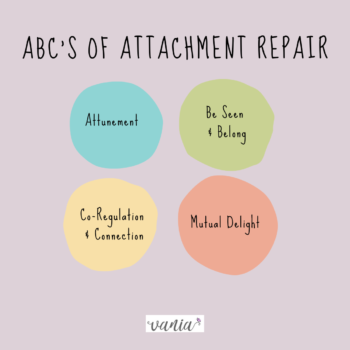 A) Attunement
A) Attunement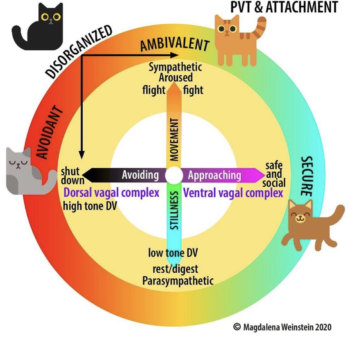
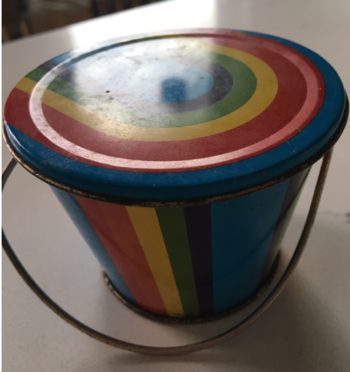
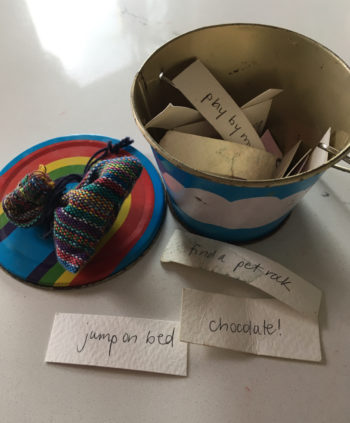
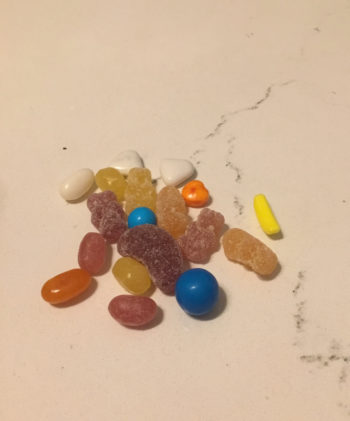 I was that mom recently, in the grocery story. You know the one, where her kids are out of control and you don’t want to make eye contact with anyone. I should have known better; what was i thinking bringing 2 kids to the grocery store to get supplies for supper. Egads, i even bargained with them to get their own stash of candy and snacks for the week.
I was that mom recently, in the grocery story. You know the one, where her kids are out of control and you don’t want to make eye contact with anyone. I should have known better; what was i thinking bringing 2 kids to the grocery store to get supplies for supper. Egads, i even bargained with them to get their own stash of candy and snacks for the week. 